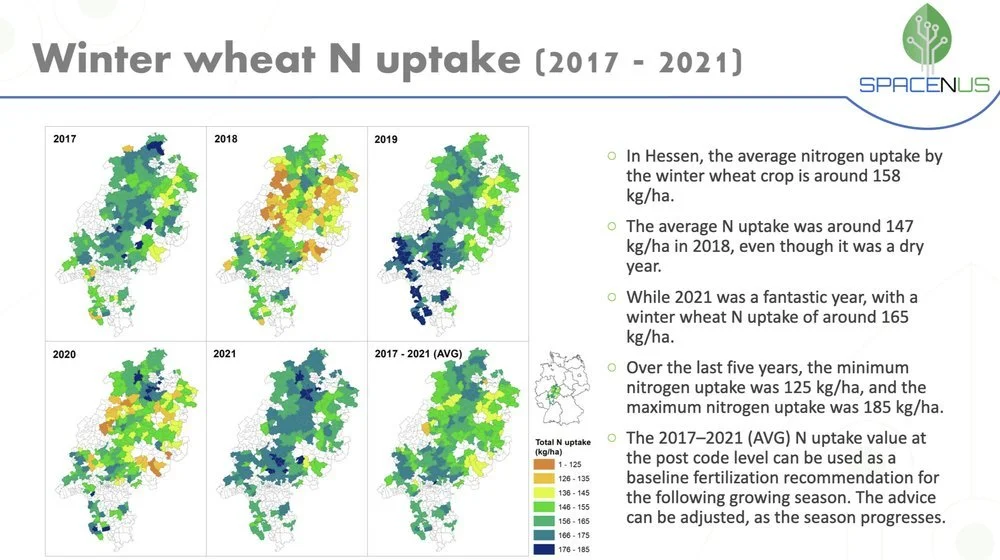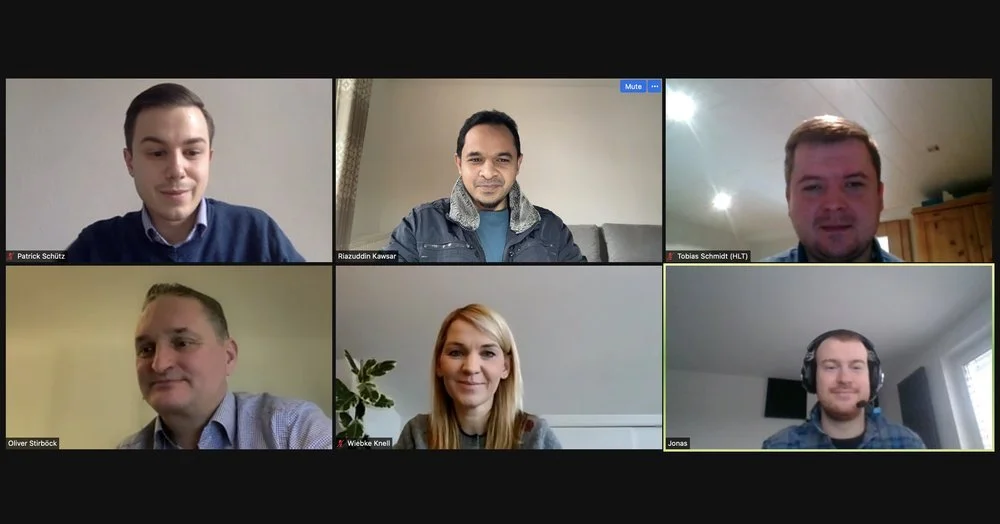Post-code based fertilizer rate recommendation
Darmstadt-based startup Spacenus aims to revolutionize agriculture by enabling data-driven agricultural decision-making, which is why it was founded. Clearly, the path to having a more significant impact was not as straightforward as it appeared initially. After four years of hard work and research, we completed a European Space Agency (ESA) project. A futuristic precision farming App (Agricultural Nutrient Assistant/ANA) and API service were realized as an outcome of that project. Ever since that point in time, we've been providing field-level analytics to various agricultural businesses and independent crop advisors in order to ensure sustainable agricultural practices. Maintaining high levels of customer satisfaction and service dependability were significant accomplishments during the initial commercial phases of 2021.
Efforts in EU countries are aimed at achieving the European Green Deal's objective. In addition to individual farmers, we believe that our technology can help government agencies provide critical advice to farmers and advance the EU green deal goal. Spacenus was visited by Hessen's digital minister, Prof. Dr. Kristina Sinemus, and a state parliament member, Torsten Leveringhaus, in the summer of 2021. They wanted to know more about ANA and how it could help farmers achieve agricultural sustainability. Artificial Intelligence-aided applications and satellite technologies in agriculture were also discussed at the meeting.
While the government supports farmers by providing fertilizer recommendations at the county level, one possibility explored in this context was whether we could provide recommendations for fertilizer on a post-code level. Recommendations should be made at a post-code level rather than at the county level in order to improve accuracy in fertilizer rate decisions. Because not all farmers have yet adopted technology and data-driven fertilizer decisions, this government-subsidized strategy of providing farmers with post-code level fertilizer recommendations may be critical in the short term.
Using data from the WIBank Hessen and other sources, we examined all of Hessen's fields from the previous six years to see if this strategy would work in practice. Finally, we calculated the annual total nitrogen uptake of all the fields using historical satellite images and aggregated the value at the post-code level using this data. You can find more details about the approach here. Using this information, precise fertilizer recommendations can be provided down the street to the post-code level. There are a number of ways that this information can be used to help farmers make fertilizer recommendations. Still, it's also likely to help control fertilizer rates at the post-code level rather than the entire county.
It may be necessary to use a wide range of fertilizer rates to ensure optimal plant development because of the county's size. According to our findings, the average nitrogen uptake in Hessen is 165 kg/ha, but this can vary widely by post-code, from as high as 180 kg/ha to as low as 135 kg/ha. There are, of course, some drawbacks to this method, but it is still a significant improvement over what we currently have. It would be better to offer fertilizer rate recommendations at the field level based on historical satellite-based nitrogen status observations to overcome this constraint, but this would be more costly.
We recently had an online meeting with two more German politicians, Wiebke Knell and Oliver Stirböck of FDP party. During that meeting, policymakers were shown a map of Hessen's precision farming areas based on postal codes. Precision farming has the potential to have far-reaching effects, as Spacenus demonstrated to the audience. For farmers to embrace technology in agriculture, we have also emphasized the importance of adequate financial support. As Wiebke knell put it after the meeting, "We free democrats are convinced: To make agriculture more modern, efficient and sustainable, we must take advantage of the opportunities that digitization provides."
This information can be provided to farmers ahead of time by county, post-code, or field and is based on historical data from Spacenus. Sustainable farming practices can be enforced by using a variety of policy instruments, including the use of these rate recommendations by policymakers. As a company, it is our responsibility to ensure environmental sustainability. We are happy to provide farmers with the post-code level fertilizer rate recommendation for free if they inquire about it.
To help farmers comply with environmental regulations, governments around the world appear to be funding such agricultural analytics on a large scale. It is important to note that such bold efforts by the government alone would not enable sustainable agriculture. We'll also need agricultural corporations to get involved. Our post-code-based rate recommendation is a cost-effective way for agricultural and food corporations to help their farmers succeed while simultaneously having a greater and more positive environmental impact. You may learn more about our strategy by reading our blogs or sending us an email, and we'll be pleased to set up a call with you.



